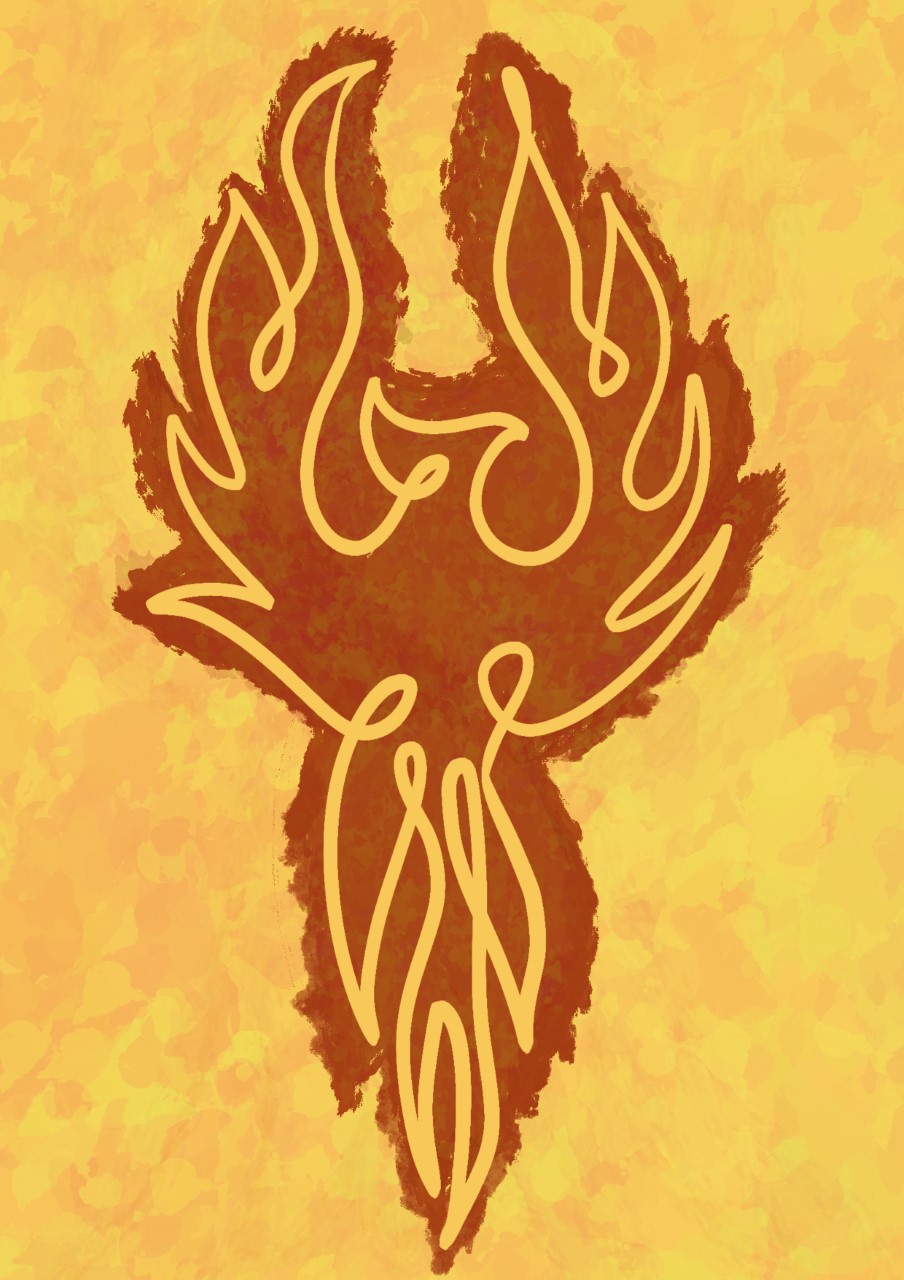
Rags-to-riches, a trope that has been infiltrating our lives for so long and leaves us hungry for more. A concept evident in the stories of so many famous celebrities, from Oprah Winfrey to Steve Jobs (McDowell, 2021). But, do these stories truly illustrate the rise to success? Do they give us the motivation that we need to fulfill our own dreams? Or do they perhaps leave us with the feeling that we are not good enough, comparing ourselves to these people and their stories of resilience? And another important question, do we glamorize adversity?
Rags-to-riches, a trope that has been infiltrating our lives for so long and leaves us hungry for more. A concept evident in the stories of so many famous celebrities, from Oprah Winfrey to Steve Jobs (McDowell, 2021). But, do these stories truly illustrate the rise to success? Do they give us the motivation that we need to fulfill our own dreams? Or do they perhaps leave us with the feeling that we are not good enough, comparing ourselves to these people and their stories of resilience? And another important question, do we glamorize adversity?

Illustration: Anushka Sabhanam
Autobiographies, biopics, memoirs, articles and interviews are some of the many ways for us to consume the life-stories of others. These stories are especially gripping when they illustrate a narrative of success with a happy ending, with the protagonist starting from the bottom and climbing their way to the top. Even as children we are exposed to this trope, the beloved fairytale of Cinderella being a prime example- going from cooking and cleaning her household floors to living her princess dreams. Why is it that we love rags-to-riches stories so much? What is it that makes them so heart-warming and inspirational? At its core, the trope merely illustrates a rise to wealth from poverty, and not the manner in which it occurs, whether through luck or hard work. In this article the extent rags-to-riches stories are beneficial or damaging to our well-being will be explored. Success has no clear formula and hence it is difficult to see how these stories affect us despite how much we love them.
Why We Love Reading Success Stories
Resilience is an integral concept that is at the center of many success stories. This is because many examples of such stories illustrate picking yourself back up after a hard time and pushing through, and then we can arrive at a place of success. According to the American Psychological Association (2012), resilience can be defined as the ‘process of adapting well in the face of adversity, trauma, tragedy, threats, or significant sources of stress’. When facing such circumstances, resilience may involve learning about ourselves and empower us to push through the hard times. In a sense, adversity can be seen as the seeds for growth, encouraging persistence. This is a sentiment that is portrayed in many success stories, and we just love it.
We place more importance or inspiration on success stories born from adversity because we need them. Whilst experiencing a period of hardship, it is easy to fall into despair and this is exactly where rags-to-riches stories keep us motivated (Gallo, 2016). From a psychological perspective, humans find meaning in struggle. Additionally, even in nature beautiful things come from ‘hardship’- pressure to create diamonds or harsh soil for good wine (Gallo, 2021). We are wired to enjoy these stories as they are relatable. These analogies can be found anywhere in nature and simply spark hope, but our easiest source for consuming such success stories is through the media.
As the media portrays these stories of success, and audiences follow them for motivation, the media can end up glamorizing hardships and struggles. When this glamorization occurs, it is possible that we lead ourselves down the road of comparing ourselves and our circumstances to others.
The Consequences of Comparing Ourselves to Others
‘Comparative suffering is a defence mechanism’ says Sarah Buxton (2020), a clinical professional counselor, specialised in solution-focused work to support individual growth. Comparative suffering entails trying to rationalise your own pain by comparing it to others’. Buxton suggests that there are pros and cons to this coping mechanism. It has the potential to minimize the legitimacy of our feelings and ultimately invalidate them (Buxton 2020). Comparison can occur in a positive or a negative manner. For the positive manner, if we compare our hardships to someone worse than us – downwards comparison – we will consider why we are unhappy if our lives are still positive in some aspects. Alternatively, if we compare ourselves to someone who has a better life to us – upwards comparison – the self-perception of our hardships can lead us down a rabbithole of resentment and bitterness. Comparative suffering can alter our sense of empathy, and our perception of other people (Butxon, 2020). Considering that comparison is an innate quality of being, one could argue we should just avoid opportunities to be able to compare ourselves to one another – success stories – altogether.
Leon Festinger’s social comparison theory (1954) can help us understand why we compare ourselves to others. His theory suggests that individuals will compare themselves to others to evaluate their own opinions and abilities, hence he claims comparison to be a drive within every individual. The social comparison theory has since been built upon the basis that comparison to others is perhaps more complex. Moreover, some other research suggests that comparison might be something we need: a study by Lockwood and Kunda (1997), breaks down why we compare ourselves to role models in ‘Superstars and Me: Predicting the Impact of Role Models on the Self’.
The Mechanisms of Comparing Ourselves to Role Models
This research suggests that looking up to ‘superstars’, or role models, can have three possible effects: self-enhancement, self-deflation, or no consequence at all, meaning our self-perception remains the same. The consequence for an individual is dependent on whether or not they perceive the role models as ‘relevant’. Relevance would entail that the individual finds the role model to be excelling in one of their interests. If the individual does in fact find them to be relevant, the consequence of comparison is decided by whether the success of the role model feels attainable. Whereas unattainable success/ goal of relevant role models would lead to self-deflation, and the alternative would lead to self-enhancement. Furthermore, there is an apparent distinction between reflection and inspiration (Lockwood & Kunda, 1997). Reflection takes place when a role model is not self-relevant, but part of the individual’s collective identity: the individual can recognise themselves in the role model, for instance in the role model’s ethnicity or gender. On the other hand, in order to be inspiring, the role model would need to be perceived as personally relevant, and a personal interest (i.e soccer) or trait (i.e confidence) that is perceived to be unique to the individual must be of the role model’s excellence. Considering this research, perhaps we should still turn to rags-to-riches stories, as they can promote self-enhancement when the stories focus on someone who is relevant to us and their success/ goals are attainable. However, there are still instances where there are role models we find relevant but their goals are not achievable to us, leading to self deflation. Ultimately, this shows that comparing ourselves to role models can be beneficial but also have harming effects.
The Darkside of Success Stories and the Rags-to-Riches Trope
The media glamorizes adversity, and according to Wiegel (2019) it is propaganda. Weigel suggests that we are blinded by these stories of success, perhaps hoping these methods – that may be advocated in TED talks or self-help books – may work for us as well, rather than to think for ourselves and push to find our own way. It is possible to rise from adversity, but only if we think for ourselves, and not necessarily fall into the safety net of emotionally investing in these stories. When rags-to-riches stories emphasise the success of the protagonist rather than the hardships they overcame, this can be discouraging. Regardless of whether fate or hard work and merit can explain one’s success, such stories fail to acknowledge that not everyone can race from the bottom to the top. As shown by Lockwood and Kunda’s research (1997), the moment we feel such success is unattainable for us as well, it can result in self-deflation. Thus, the glamorization of adversity may portray many stories of resilience and success, and although it can serve as encouragement, they may also keep us from thinking for ourselves.
So how does the media’s glamorization of adversity affect us? The glamorization of rags-to-riches stories in the media can encourage our self-enhancement, but the very same stories may indeed be damaging our self-view when they seem unattainable. As everyone experiences adversity to some extent, shape or form, it is important to realise that we can turn to those role models that strike us as relevant and to pick out those aspects that we find are most inspiring. Hence, taking all the positive effects of success stories into account, can they really be detrimental?<<
References
-Buxton, S. (2020, 20 april). Comparative Suffering is Dangerous. Center Psychotherapy.
-Festinger, L. (1954). A Theory of Social Comparison Processes. A Theory of Social Comparison Processes, 7(2), 117–140.
-Festinger, L. (1954). A Theory of Social Comparison Processes. A Theory of Social Comparison Processes, 7(2), 117–140.
-Gallo, C. (2016, 28 januari). Why Stories Of Struggle Bring Out The Best In Others. Forbes.
-Gallo, C. (2021, 5 januari). Why We’re Wired to Love Rags-to-Riches Stories. Inc.Com.
-Lockwood, P., & Kunda, Z. (1997). Superstars and Me: Predicting the Impact of Role Models on the Self. Journal of Personality and Social Psychology, 73(1), 91–103.
-McDowell, E. (2021, 10 januari). 21 rags-to-riches stories that will inspire you. Business Insider.
-Palmiter, D., Alvord, M., Dorlen, R., Comas-Diaz, L., S Luthar, S., R Maddi, S., K O’Neill, H., W Saakvitne, K., & G Tedeschi, R. (2021). Building Your Resilience. APA.
-Weigel, M. (2019, 1 april). Why success stories are just propaganda. Martin Weigel.
Autobiographies, biopics, memoirs, articles and interviews are some of the many ways for us to consume the life-stories of others. These stories are especially gripping when they illustrate a narrative of success with a happy ending, with the protagonist starting from the bottom and climbing their way to the top. Even as children we are exposed to this trope, the beloved fairytale of Cinderella being a prime example- going from cooking and cleaning her household floors to living her princess dreams. Why is it that we love rags-to-riches stories so much? What is it that makes them so heart-warming and inspirational? At its core, the trope merely illustrates a rise to wealth from poverty, and not the manner in which it occurs, whether through luck or hard work. In this article the extent rags-to-riches stories are beneficial or damaging to our well-being will be explored. Success has no clear formula and hence it is difficult to see how these stories affect us despite how much we love them.
Why We Love Reading Success Stories
Resilience is an integral concept that is at the center of many success stories. This is because many examples of such stories illustrate picking yourself back up after a hard time and pushing through, and then we can arrive at a place of success. According to the American Psychological Association (2012), resilience can be defined as the ‘process of adapting well in the face of adversity, trauma, tragedy, threats, or significant sources of stress’. When facing such circumstances, resilience may involve learning about ourselves and empower us to push through the hard times. In a sense, adversity can be seen as the seeds for growth, encouraging persistence. This is a sentiment that is portrayed in many success stories, and we just love it.
We place more importance or inspiration on success stories born from adversity because we need them. Whilst experiencing a period of hardship, it is easy to fall into despair and this is exactly where rags-to-riches stories keep us motivated (Gallo, 2016). From a psychological perspective, humans find meaning in struggle. Additionally, even in nature beautiful things come from ‘hardship’- pressure to create diamonds or harsh soil for good wine (Gallo, 2021). We are wired to enjoy these stories as they are relatable. These analogies can be found anywhere in nature and simply spark hope, but our easiest source for consuming such success stories is through the media.
As the media portrays these stories of success, and audiences follow them for motivation, the media can end up glamorizing hardships and struggles. When this glamorization occurs, it is possible that we lead ourselves down the road of comparing ourselves and our circumstances to others.
The Consequences of Comparing Ourselves to Others
‘Comparative suffering is a defence mechanism’ says Sarah Buxton (2020), a clinical professional counselor, specialised in solution-focused work to support individual growth. Comparative suffering entails trying to rationalise your own pain by comparing it to others’. Buxton suggests that there are pros and cons to this coping mechanism. It has the potential to minimize the legitimacy of our feelings and ultimately invalidate them (Buxton 2020). Comparison can occur in a positive or a negative manner. For the positive manner, if we compare our hardships to someone worse than us – downwards comparison – we will consider why we are unhappy if our lives are still positive in some aspects. Alternatively, if we compare ourselves to someone who has a better life to us – upwards comparison – the self-perception of our hardships can lead us down a rabbithole of resentment and bitterness. Comparative suffering can alter our sense of empathy, and our perception of other people (Butxon, 2020). Considering that comparison is an innate quality of being, one could argue we should just avoid opportunities to be able to compare ourselves to one another – success stories – altogether.
Leon Festinger’s social comparison theory (1954) can help us understand why we compare ourselves to others. His theory suggests that individuals will compare themselves to others to evaluate their own opinions and abilities, hence he claims comparison to be a drive within every individual. The social comparison theory has since been built upon the basis that comparison to others is perhaps more complex. Moreover, some other research suggests that comparison might be something we need: a study by Lockwood and Kunda (1997), breaks down why we compare ourselves to role models in ‘Superstars and Me: Predicting the Impact of Role Models on the Self’.
The Mechanisms of Comparing Ourselves to Role Models
This research suggests that looking up to ‘superstars’, or role models, can have three possible effects: self-enhancement, self-deflation, or no consequence at all, meaning our self-perception remains the same. The consequence for an individual is dependent on whether or not they perceive the role models as ‘relevant’. Relevance would entail that the individual finds the role model to be excelling in one of their interests. If the individual does in fact find them to be relevant, the consequence of comparison is decided by whether the success of the role model feels attainable. Whereas unattainable success/ goal of relevant role models would lead to self-deflation, and the alternative would lead to self-enhancement. Furthermore, there is an apparent distinction between reflection and inspiration (Lockwood & Kunda, 1997). Reflection takes place when a role model is not self-relevant, but part of the individual’s collective identity: the individual can recognise themselves in the role model, for instance in the role model’s ethnicity or gender. On the other hand, in order to be inspiring, the role model would need to be perceived as personally relevant, and a personal interest (i.e soccer) or trait (i.e confidence) that is perceived to be unique to the individual must be of the role model’s excellence. Considering this research, perhaps we should still turn to rags-to-riches stories, as they can promote self-enhancement when the stories focus on someone who is relevant to us and their success/ goals are attainable. However, there are still instances where there are role models we find relevant but their goals are not achievable to us, leading to self deflation. Ultimately, this shows that comparing ourselves to role models can be beneficial but also have harming effects.
The Darkside of Success Stories and the Rags-to-Riches Trope
The media glamorizes adversity, and according to Wiegel (2019) it is propaganda. Weigel suggests that we are blinded by these stories of success, perhaps hoping these methods – that may be advocated in TED talks or self-help books – may work for us as well, rather than to think for ourselves and push to find our own way. It is possible to rise from adversity, but only if we think for ourselves, and not necessarily fall into the safety net of emotionally investing in these stories. When rags-to-riches stories emphasise the success of the protagonist rather than the hardships they overcame, this can be discouraging. Regardless of whether fate or hard work and merit can explain one’s success, such stories fail to acknowledge that not everyone can race from the bottom to the top. As shown by Lockwood and Kunda’s research (1997), the moment we feel such success is unattainable for us as well, it can result in self-deflation. Thus, the glamorization of adversity may portray many stories of resilience and success, and although it can serve as encouragement, they may also keep us from thinking for ourselves.
So how does the media’s glamorization of adversity affect us? The glamorization of rags-to-riches stories in the media can encourage our self-enhancement, but the very same stories may indeed be damaging our self-view when they seem unattainable. As everyone experiences adversity to some extent, shape or form, it is important to realise that we can turn to those role models that strike us as relevant and to pick out those aspects that we find are most inspiring. Hence, taking all the positive effects of success stories into account, can they really be detrimental?<<



